Vermont is the Green Mountain State – located between New Hampshire and upstate New York in northern New England.
Vermont is recognized to be the only state in New England with no coastal border along the Atlantic Ocean.
With only 645,500 residents, Vermont is the 2nd least populated state.
Some of the largest ski resorts are within Vermont state boundaries, although many double as summer resort towns as well.
Contents
- The 10 Most Dangerous Cities in Vermont
- 1. Barre (Washington County)
- 2. St. Albans (Franklin County)
- 3. Rutland (Rutland County)
- 4. Winooski (Chittenden County)
- 5. Burlington (Chittenden County)
- 6. St. Johnsbury (Caledonia County)
- 7. Brattleboro (Windham County)
- 8. Bennington (Bennington County)
- 9. South Burlington (Chittenden County)
- 10. Montpelier (Washington County)
- 5 Safety Tips for Traveling to Vermont
- 1. Depending on the time of year, Vermont may have intense snowstorms and cold weather.
- 2. Stay aware of your surroundings and remain alert.
- 3. Consider purchasing travel insurance in the event of a cancellation, delay, or disaster.
- 4. Stay in touch with friends/family, so no one will worry while you are gone.
- 5. Carry emergency cash.
- Vermont Safety Overview
- Frequently Asked Questions
The 10 Most Dangerous Cities in Vermont
Vermont is recognized to be the second least populated state and among the safest states to visit and in which to live.
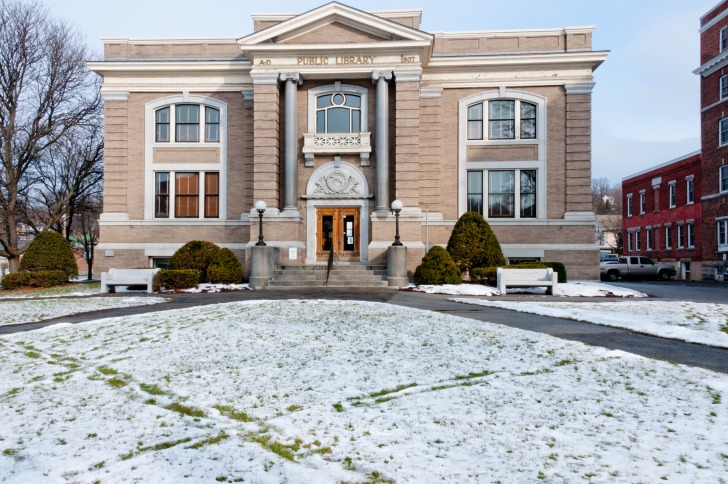
1. Barre (Washington County)
- Population – 8,457 (2021).
- Violent Crime Rate – 6.74 per 1,000 residents.
- Property Crime Rate – 19.63 per 1,000 residents.
Barre is a small city in central Vermont near the state capital of Montpelier.
The city is the self-named ‘Granite Center of the World.’
Violent crime rates in Barre are nearly four times the state average and 50% higher than the national violent crime average.
Residents in Barre are ten times more likely to be crime victims (per square mile) than all of the rest of the state.
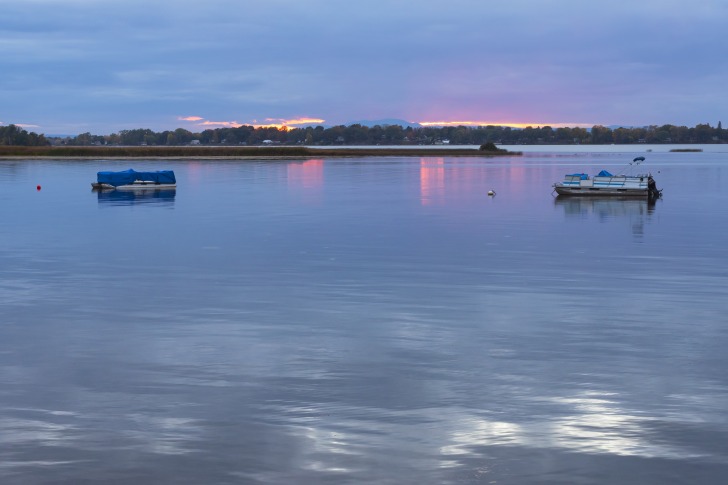
2. St. Albans (Franklin County)
- Population – 6,940 (2021).
- Violent Crime Rate – 4.90 per 1,000 residents.
- Property Crime Rate – 31.99 per 1,000 residents.
St. Albans is a small town in northern Vermont that meets Lake Champlain’s, St. Albans Bay.
About 38% of the land in St. Albans is covered by water.
St. Albans resident race a violent crime rate that is three times the Vermont state average.
Property crime is also high in St. Albans – 2.5 times more likely than the state average.
The high crime rates set St. Alban’s crime per square mile statistic as 25 times the state’s average.
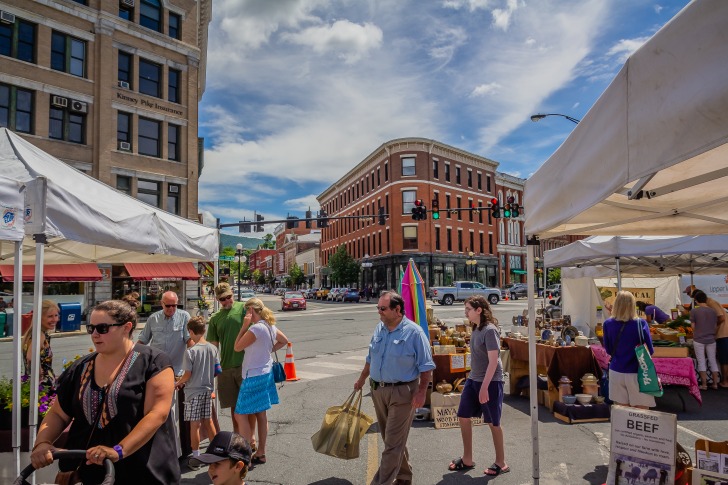
3. Rutland (Rutland County)
- Population – 15,851 (2021).
- Violent Crime Rate – 4.73 per 1,000 residents.
- Property Crime Rate – 35.39 per 1,000 residents.
Rutland is a city in the south-central part of the Green Mountain State that was founded in the 1760s.
Its entire downtown is considered a registered National historic district.
Both violent and property crimes in Rutland far exceed the state average, with more than 80 crimes per square mile compared to the Vermont crime per square mile statistic of 5.
Downtown Rutland is among the least safe, so be careful when traveling through these inner-city areas.
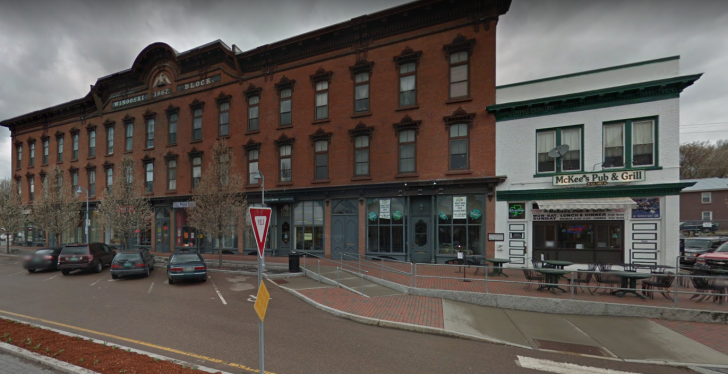
4. Winooski (Chittenden County)
- Population –8,330 (2021).
- Violent Crime Rate – 3.48 per 1,000 residents.
- Property Crime Rate – 24.49 per 1,000 residents.
Winooski is a small city on the Winooski River with the nickname Onion City.
With only 1.5 square miles, Winooski is the smallest of the ten cities within Vermont’s state boundaries.
The most dangerous areas in Winooski are between Route 89 and Route 27.
Violent crime is about 60% higher than Vermont’s state average, while the crime per square mile in Winooski is 154 or 30 times the Vermont crime per square mile stat.
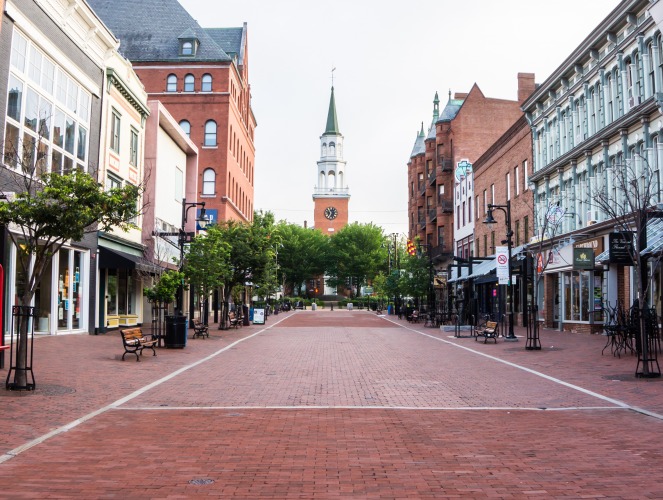
5. Burlington (Chittenden County)
- Population – 44,781 (2021).
- Violent Crime Rate – 3.44 per 1,000 residents.
- Property Crime Rate – 36.38 per 1,000 residents.
Burlington is Vermont’s largest city and home to the state’s largest airport.
It is home to Ben and Jerry’s Ice Cream and is situated along Lake Champlain, about 40 miles from the Canadian border and 90 miles from Montreal.
Violent crime in Burlington is a little less than twice the state average but still beneath the national average.
Property crime rates are a more significant problem for Burlington residents– nearly three times the Vermont state level.
Crime per square mile is 22 times more likely in Burlington than in the rest of the state.
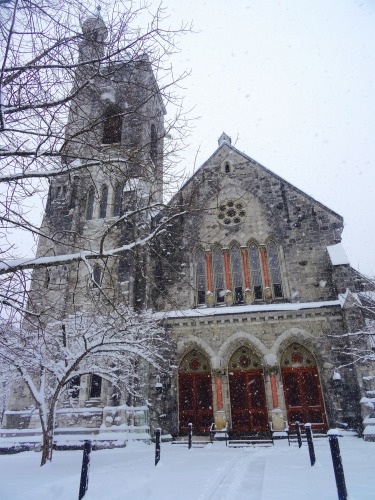
6. St. Johnsbury (Caledonia County)
- Population – 7,380 (2021).
- Violent Crime Rate – 3.25 per 1,000 residents.
- Property Crime Rate – 23.58 per 1,000 residents.
St. Johnsbury is a small town about 50 miles south of the Canadian border, situated along the Passumpsic River and near the northern parts of the Connecticut River.
Despite its small size, it is considered the regional commercial center for this part of Vermont.
Property and violent crime rates exceed the state’s impressive averages by about 50%.
The less safe parts of St. Johnsbury tend to be around Route 91 and areas to the west of the highway.
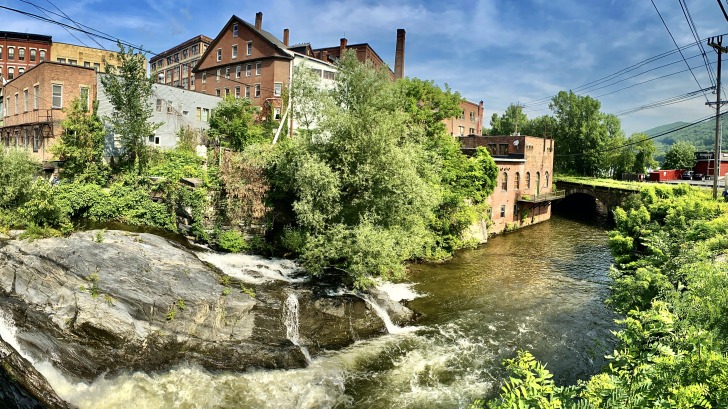
7. Brattleboro (Windham County)
- Population – 12,215 (2021).
- Violent Crime Rate – 3.11 per 1,000 residents.
- Property Crime Rate – 39.62 per 1,000 residents.
Brattleboro is a thriving arts city in south Vermont near the New Hampshire border along the Connecticut River and is often considered the gateway to the rest of Vermont.
The city is also ten miles from its Massachusetts border.
South Brattleboro’s neighborhoods are rougher than those to the north.
While violent crime exceeds state and national averages, Brattleboro’s more significant issue is with property crime, which exceeds three times the state average and twice the national median property crime statistic.
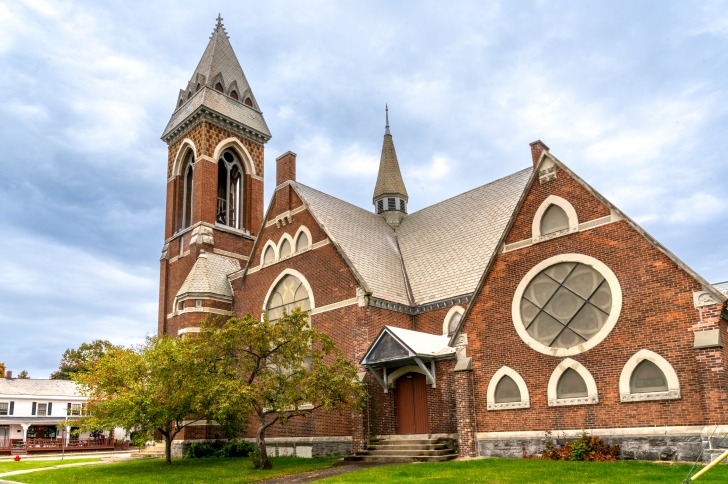
8. Bennington (Bennington County)
- Population – 15,303 (2021).
- Violent Crime Rate – 2.48 per 1,000 residents.
- Property Crime Rate – 15.36 per 1,000 residents.
Bennington is a city in southern Vermont and home to the elite Bennington College.
The city sits close to the Massachusetts and New York state borders on the edge of the Green Mountains.
While crime rates are low compared to the national rates, Benington’s violent and property crime rates fall above state averages.
The northern parts of the city are considered less safe.
Even the crime per square mile in Bennington exceeds Vermont’s state average.
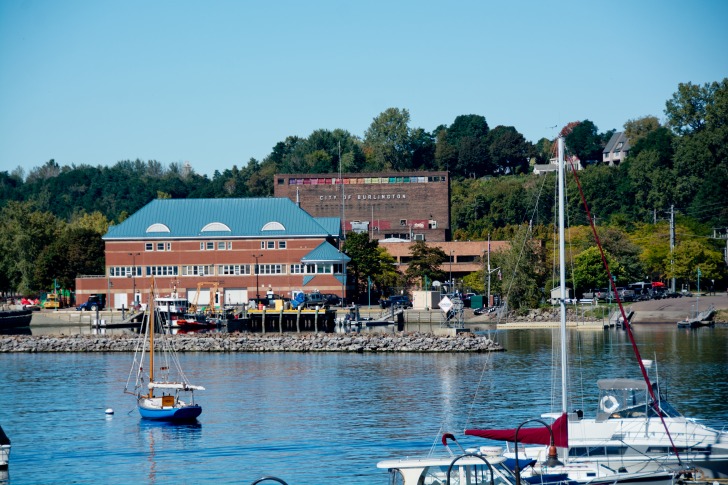
9. South Burlington (Chittenden County)
- Population – 20,282 (2021).
- Violent Crime Rate – 2.12 per 1,000 residents.
- Property Crime Rate – 22.34 per 1,000 residents.
South Burlington is a city in northern Vermont that is home to the state’s largest mall.
South Burlington is home to various parks and outdoor amenities, including beaches along Lake Champlain and Overlook Park, which offers views of the Adirondacks.
Property crime is more problematic than violent crimes – nearly twice the rate for Vermont.
The crime per square mile for residents of South Burlington is more than three times the state average.
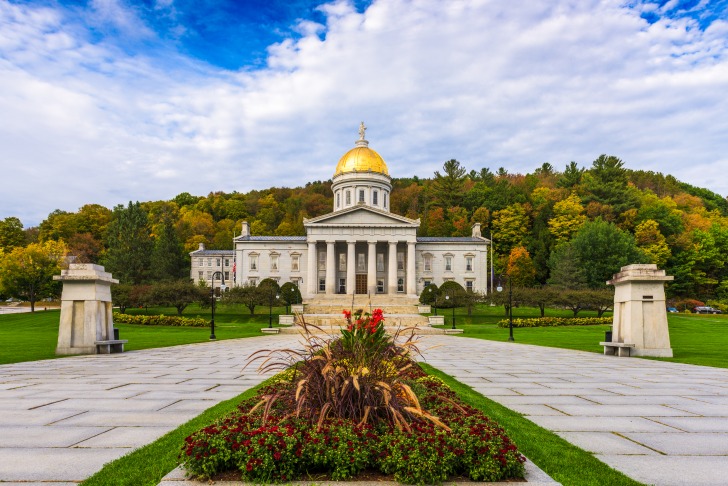
10. Montpelier (Washington County)
- Population – 8,002 (2021).
- Violent Crime Rate – 1.50 per 1,000 residents.
- Property Crime Rate – 17.87 per 1,000 residents.
Montpelier is Vermont’s state capital and the country’s least-populated state capital.
Montpelier, which is home to the New England Culinary Institute, is centrally located, and during the day, its population is more than 20,000 due to the state workers descending on the capital each workday.
The less safe neighborhoods of Montpellier are in the southern parts near Highway 89.
Vermont’s state capital offers a safer city than most capital cities nationwide.
5 Safety Tips for Traveling to Vermont
1. Depending on the time of year, Vermont may have intense snowstorms and cold weather.
Vermont is recognized as the 7th coldest state.
The coldest Vermont month is January when temps can average 10 degrees.
The average snowfall in this state exceeds 91 inches, which significantly exceeds the national average of the nation – 25 inches.
2. Stay aware of your surroundings and remain alert.
The easiest and most direct way to avoid becoming a target of scammers or thieves in Vermont is to NOT look or act like a target.
Project confidence as you walk, as this sends a subliminal message to would-be targets.
3. Consider purchasing travel insurance in the event of a cancellation, delay, or disaster.
Depending on the policy, travel insurance reimburses policyholders for defined losses.
It varies widely but is a great way to create peace of mind while traveling, especially considering the costs of traveling in the 21stcentury.
4. Stay in touch with friends/family, so no one will worry while you are gone.
Most of Vermont has a cell signal, but there are mountains and rural areas throughout the state.
Send an update when you are traveling through an area with cell service.
5. Carry emergency cash.
Life is unexpected – even when on vacation.
Having a bit of cash hidden somewhere unusual can be incredibly helpful if faced with an unexpected event or emergency.
Vermont Safety Overview
READ THE FULL REPORT: Vermont Safety Review
Safety Index:
- OVERALL RISK: LOW
- TRANSPORT & TAXIS RISK: LOW
- PICKPOCKETS RISK: LOW
- NATURAL DISASTERS RISK: LOW
- MUGGING RISK: LOW
- TERRORISM RISK: LOW
- SCAMS RISK: MEDIUM
- WOMEN TRAVELERS RISK: LOW
Frequently Asked Questions
What is one of Vermont’s biggest tourist attractions?
While most people think of Stowe as a skier’s haven, the reality is that there are amazing art and balloon shows and festivals in the summer.
What is the tallest point in Vermont?
The highest peak in Vermont is Mount Mansfield, which stands 4,393 feet above sea level.
How far is it from southern Vermont in Greensboro to the Canadian border?
The longest point from the south – at the Massachusetts border – to the northern border – is 160 miles.
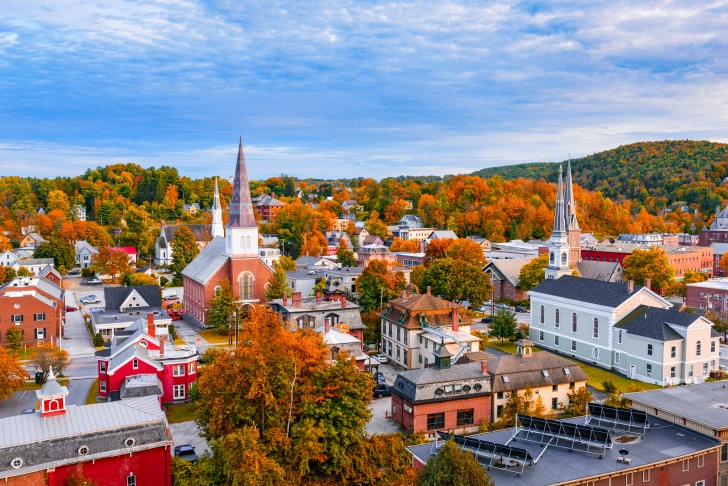
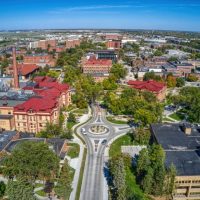
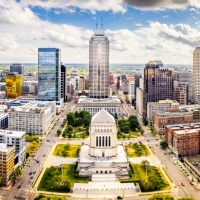
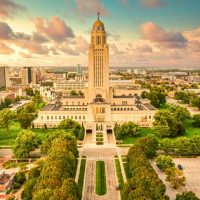

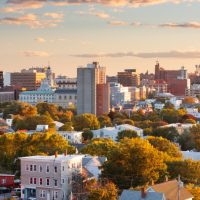






Vermont is a beautiful state with stunning landscapes and charming small towns, making it a popular destination for tourists. However, as with any place, it is important to remain aware of your surroundings and take necessary precautions to ensure a safe and enjoyable trip.